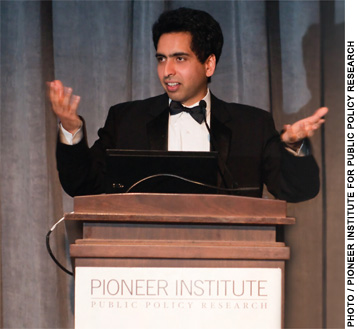The core of A Nation at Risk was its concern that America’s public schools were not challenging enough to prepare students for a future built on technology and information. Students, Risk said, were not taking enough academic courses. Expectations for students were set too low, evidenced by the fact that grades for coursework often failed to correlate with students’ scores on independent exams. Too little of the day was spent in class or doing homework. The school year was too short. Too few teachers were qualified to teach math and science. Finally, teachers were being drawn mainly from the bottom of the achievement distribution among college students.
Risk‘s recommendations focused on solving the problems in four areas: curriculum, expectations, time, and teaching. Twenty years later, progress on these recommendations has been spotty and altogether disappointing. Substantial progress has been made in the area of curriculum, where Risk‘s recommendations could be fulfilled by rule changes, such as increasing requirements for graduation. A much larger share of students is taking an academic slate of courses (see Figures 1-3). But whether the content of these courses is actually any more difficult is impossible to tell. Progress has also been made on recommendations that required real change, if they were supported by powerful interest groups in education, especially the teacher unions. For instance, teachers have seen real increases in salary, though the average salary of other college graduates grew at a higher rate during the boom years of the 1990s (see Figures 4 & 5).
The authors of A Nation at Risk were opposed to “more of the same”: more spending on the same old curriculum without fundamental changes in expectations and time use. Nevertheless, powerful interest groups were able to use the climate of urgency created by the report to get their own preferred policies enacted, even when the policies were not recommended by Risk. For instance, per-pupil spending has risen sharply while class size has fallen significantly (see Figures 6-8). The same interest groups were able to block some Risk recommendations that would have required real changes, such as lengthening the school year and assigning more homework (see Figures 9-11).
-Caroline M. Hoxby is a professor of economics at Harvard University and a visiting fellow at the Hoover Institution, Stanford University.
 |
 |
 |
 |
 |
 |
 |
 |
 |




